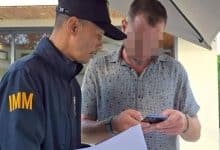Clear for takeoff: Thailand’s aviation adopts pay-to-fly models amid post-Covid revival

Thailand’s aviation industry is witnessing growth in pay-to-fly employment models after the struggle to regain its pre-Covid footing. In these arrangements, licensed pilots are required to pay more than 1.5 million baht (US$ 42,702) for training, a prerequisite to securing a job.
This is happening against a backdrop of pilot salaries remaining below pre-pandemic levels due to a decrease in the size of airline fleets. The situation is particularly challenging for student pilots, who, lacking requisite experience, find it difficult to compete with seasoned professionals.
As per the International Air Transport Association, recovery for Asia-Pacific aviation trailed the rest of the globe last year. However, with the reopening of China in the early weeks of 2023, it’s anticipated that recovery will be brought forward from 2025 to 2024.
Yet, in Thailand, a glut of idle pilots has led several airlines to introduce a pay-to-fly element to their recruitment programmes. Potential pilots seeking new career opportunities have to go through training to ensure their skills match the requirements of the aircraft types that the hiring airlines operate.
The head of flight operations at Thai AirAsia, Damrong Phaspipatkul, highlighted that while Thai AirAsia does not subscribe to this scheme and still offers free training to its employees, such models of employment are being seen with an increasing frequency across several Thai airlines, reported Bangkok Post.
Damrong suggested that rather than labelling it as pay-to-fly, this expense should be referred to as a training fee for pilots. He elaborated that this recruitment process is a deviation from the norm back when airlines would cover this cost. However, with operational costs being high for flight training, some airlines are adopting this mechanism.
Despite the worrying trend, Damrong voiced his optimism, citing projections for growth in Thailand’s aviation industry over the next one to two years. He stated that the enhanced growth implies both a normalisation of pilot employment opportunities and salaries and the creation of job opportunities for student pilots when airlines start growing their fleet size again.
Anonymous pilots in Thailand confirm that the pay-to-fly scheme begins at a rate of 1.5 million baht. Despite gaining employment, the average monthly remuneration of full-time pilots at low-cost carriers still pales in comparison to the 280,000 baht (US$7,971) earned monthly pre-pandemic. The pay-to-fly scheme is seen as a means of securing employment by pilots unwilling to work outside the country.
However, this deficiency of job opportunities and decreased salaries has resulted in a brain drain, as experienced pilots find better job opportunities, higher salaries, and added benefits such as education expenses for their children being covered, in overseas airlines, especially those in the Middle East.
Latest Thailand News
Follow The Thaiger on Google News:


























